U.S. Companies Are More Than Ready for Uniform Sustainability Reporting Frameworks


Orange skies in San Francisco, during the California wildfires of summer 2020
The recent Supreme Court ruling, West Virginia vs. EPA, imposes unprecedented restraints on urgent efforts to slow climate change, conserve nature and address this century’s other global sustainability challenges. Nevertheless, I remain encouraged by the voluntary progress made by businesses and regulators like the SEC, which recently proposed a new rule that would mandate corporate climate-related risk disclosures. This SEC rule will help U.S. companies remain competitive globally, level the playing field for investors and ultimately help address the climate crisis by pushing companies to enhance their emissions reporting and better consider physical and transition risks.
Global markets and the world’s largest corporations have an outsized impact in driving the decisions that affect nature, biodiversity and the climate. That’s why, for the past 30 years, World Wildlife Fund (WWF) and other conservation groups have been helping companies set targets, transform supply chains, develop responsible sourcing policies and industry standards, identify and mitigate sourcing risks, share best practices and reduce the private sector’s environmental footprint.
Now more than ever, business leaders recognize the need for bold action. By 2020, 60 percent of Fortune 500 companies had already set a climate or energy-related commitment, a 12 percent increase over 2017. Science-based target setting has also grown significantly, with 63 Fortune 500 companies (13 percent) having set targets approved by the Science Based Targets initiative (SBTi), six times the number of companies that had done so in 2017.
Nevertheless, we need to keep pushing. We know how the twin crises of nature loss and climate change can damage nature and economies. In 2021, climate-related disasters in the U.S. alone totaled nearly $100 billion. Today, over half of the world’s gross domestic product (GDP) is at moderate or severe risk due to nature loss.
At the same time, efforts to fulfill the Paris Climate Agreement could unlock climate-related investments worth nearly $23 trillion by 2030 in sectors like renewable energy, energy efficiency and low-carbon technology A recent report by the Global Commission on Adaptation concludes that investments in adaptation can generate significant economic returns—many times more than their costs.
This is where the proposed SEC rule comes in. Companies generally prefer less regulation rather than more, but today’s voluntary patchwork of frameworks and standards for corporate climate-related risk disclosures is a mess for investors as well as the businesses they are analyzing. The proposed SEC rule would help address this by creating uniform sustainability frameworks and standards for consistent and comparable reporting, thereby reducing uncertainty and establishing a more level playing field. I have heard firsthand from many companies that this rule will improve their business prospects over the long-term and allow U.S. companies to better compete with global companies that are either ahead of the U.S. in terms of their voluntary disclosures or, inversely, are operating in jurisdictions where little or no voluntary or mandatory standards exist.
There is also overwhelming public support for this rule. According to a recent poll, 87 percent of Americans of all political stripes — many of whom have pensions, retirements and other investments overseen by the SEC — agree that public companies should disclose their risks from climate change.
Once the final SEC rule comes into effect in the months to come, more corporations in the U.S. and abroad will undoubtedly take steps to adapt to climate change, remain competitive across international boundaries and prepare for a new age of clean commerce focused on sustainability. At the same time, the rule will help drive the protection of nature and key biodiversity by facilitating the shift of financial capital allocation away from carbon-intensive activities and towards investments that will speed the transition to a net-zero economy.
The climate-induced disruptions unfolding across the globe present many risks for people and businesses, but savvy, forward thinking leaders can seize this moment to drive meaningful and measurable change. Government actions like this new SEC rule empower business sustainability leaders to deliver significant benefits to communities, companies and the world-at-large.
Interested in having your voice heard on 3p? Contact us at editorial@3BLMedia.com and pitch your idea for a guest article to us.
Image credit: Thom Milkovic via Unsplash
Why This AI Firm is Underwriting Scholarships for LGBTQ Students
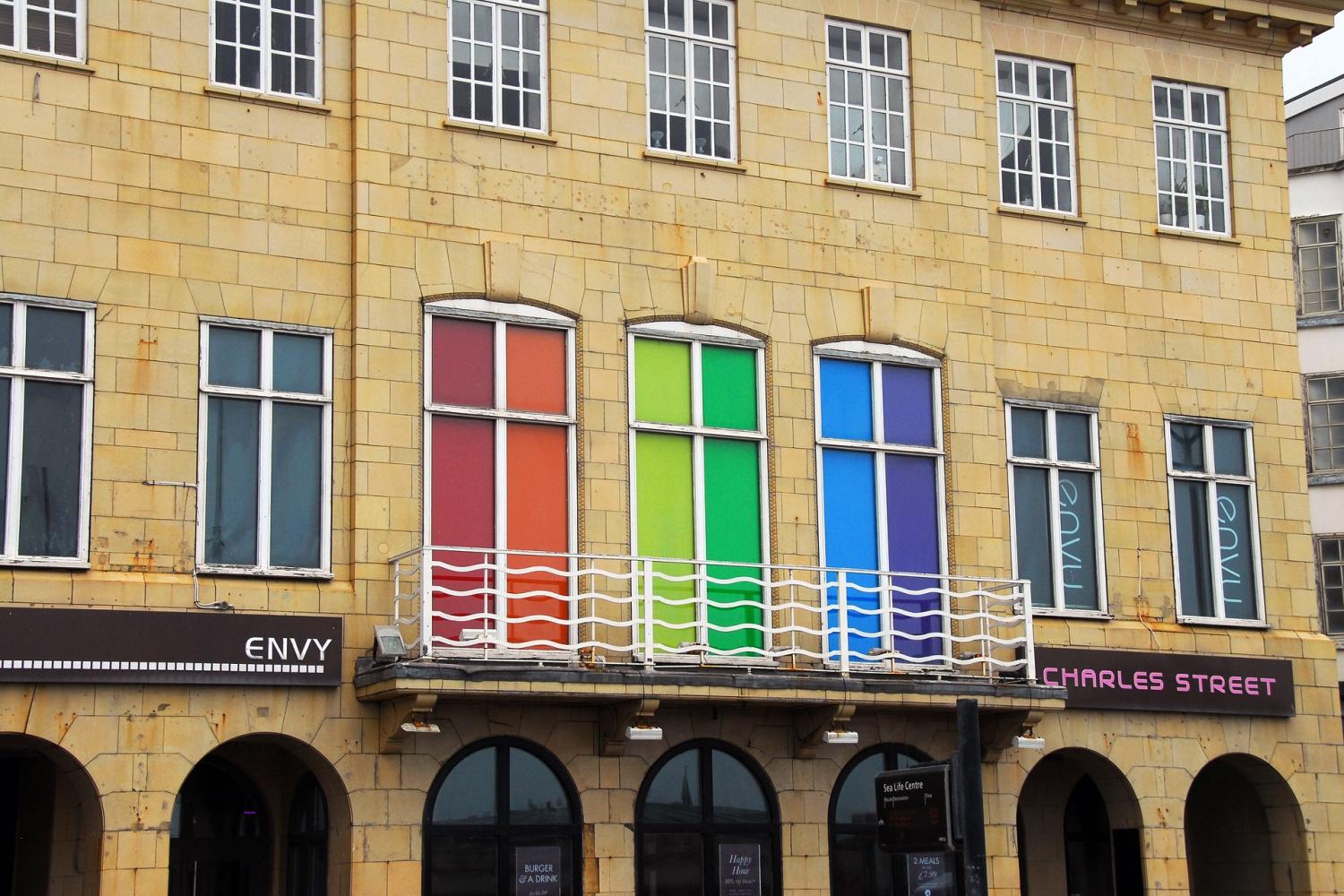
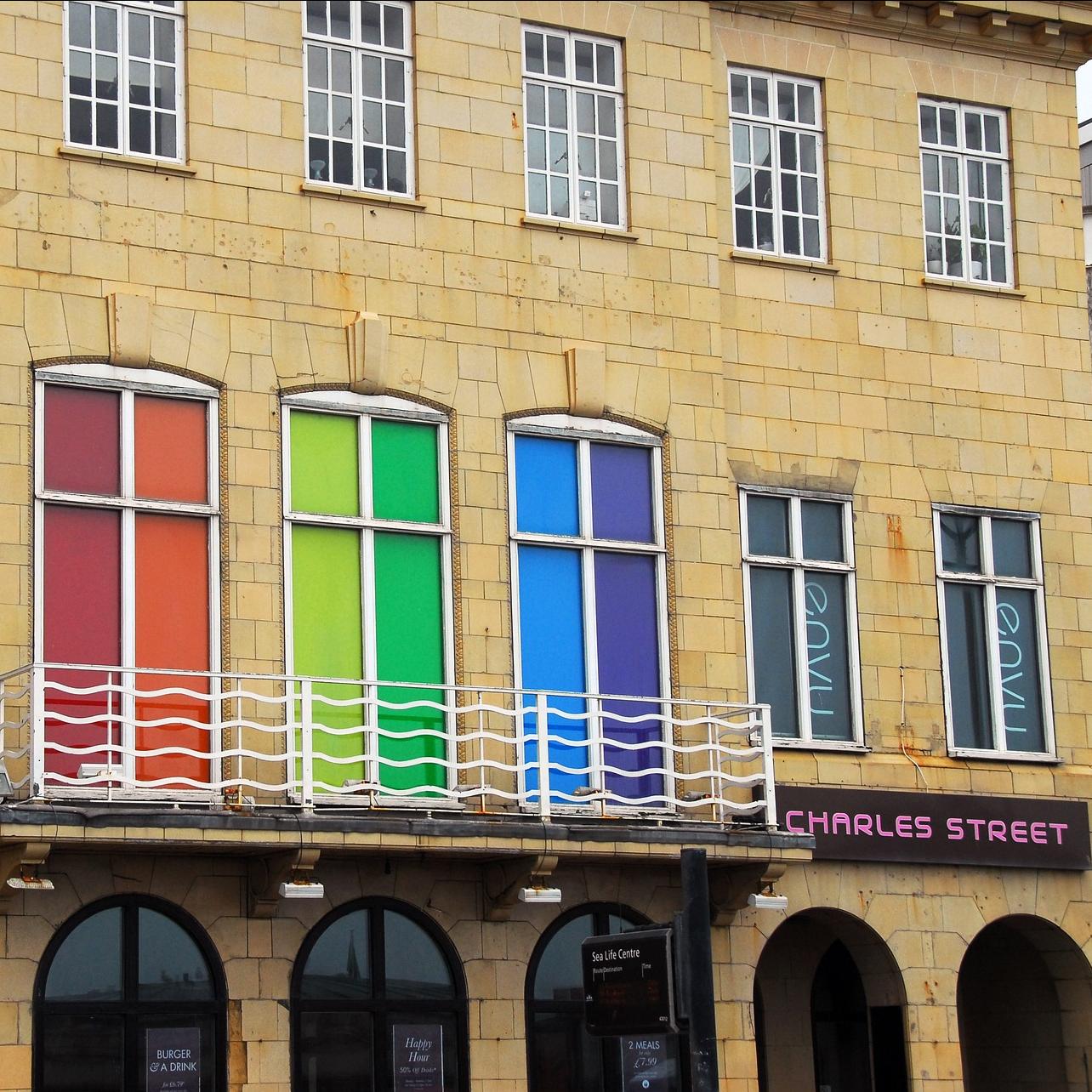
In its most recent survey on the mental health of the U.S. LGBTQ community, The Trevor Project found that almost three-quarters of young LGBTQ Americans say they've experienced some form of discrimination based on their sexual orientation or gender identity at least once during their lifetimes.
To that end, Glider, a hiring software platform that uses artificial intelligence (AI), and Omni Inclusive, a Minnesota-based staffing company, have joined forces to fund a scholarship program that focuses on LGBTQ students who are pursuing degrees in both STEM (science, technology, engineering and math) as well as the liberal arts. LGBTQ students in their second year of college who can prove financial need and have a minimum 3.0 grade point average are eligible to apply for the scholarships.
Since the companies announced this joint scholarship program last month, they have received more than 250 applicants.
From Glider's perspective, the scholarship program can open doors to new opportunities for young LGBTQ people, as well as establish trust for how AI can eliminate bias in hiring. While more companies are revamping their hiring processes, and making changes such as eliminating any university grade requirements, bias in hiring is still a stubborn problem at companies during and long after the hiring process. The problems with truly inclusive hiring lie in part due to the growing reliance on algorithms and other next-generation software technologies that weed out applicants, and often those who are people of color.
Such failure in hiring practices can cause hurt all around. At least one study has suggested that while bias clearly takes a toll on employees, it can also negatively affect corporate bottom lines as well.
Still, many feel a lingering mistrust over AI’s impact in the workplace. “There is natural hesitation towards a change of any nature," a spokesperson for Glider said. "Reactions to AI tend to come from a fear of the unknown and a lack of transparency. Similarly, skill tests or competency assessments have and continue to receive pushback from some recruiters with a belief that it will slow down hiring and candidates will not participate in the interview process.”
The Glider representative noted the research of one firm, which found that many job candidates actually prefer taking skill tests to demonstrate their competencies over such traditional screening processes as resume reviews. Further, job applicants who identify as a racial or ethnic minority overwhelmingly prefer skill tests by almost 70 percent. Since such assessments and AI screening can share the same goals, Glider argues that the result can even be a preference among more diverse groups, as AI can eliminate human bias, and do so better than individual people.
The LGBTQ community has also confronted its own problems with bias in hiring and the workplace, particularly in STEM-related fields. A McKinsey study from 2020 found that junior employees struggle to find their footing in corporate America at a higher rate than their more senior colleagues — and women more than men — with bias among the key reasons.
To that end, Glider says its solution and other AI-based alternatives emphasize the use of questions related to skill tests or interviews, which are then vetted through subject matter experts in their respective fields. In addition, the questions undergo further scrutiny by industrial and organizational psychologists to ensure that such questions are fair and at the right level of difficulty. On that point, Glider says its software’s DEI capabilities eliminate bias from interviews, doing so proactively through a stringent question development process that masks personally identifiable information like names, gender and appearance. The company says it offers both candidates and hiring teams complete transparency while using the product, as its software defines permissible behaviors and rules of engagement to eliminate any ambiguity.
As far as their scholarships go, Glider and Omni Inclusive say their own companies reflect their program’s plan. Glider is a minority-owned company; Omni Inclusive is a is a female-owned business, with the CEO, Wen Stenger, identifying as LGBTQ.
Image credit: lachrimae72 via Pixabay
Companies Supporting Build Back Better Can Still Kick Climate Action into High Gear
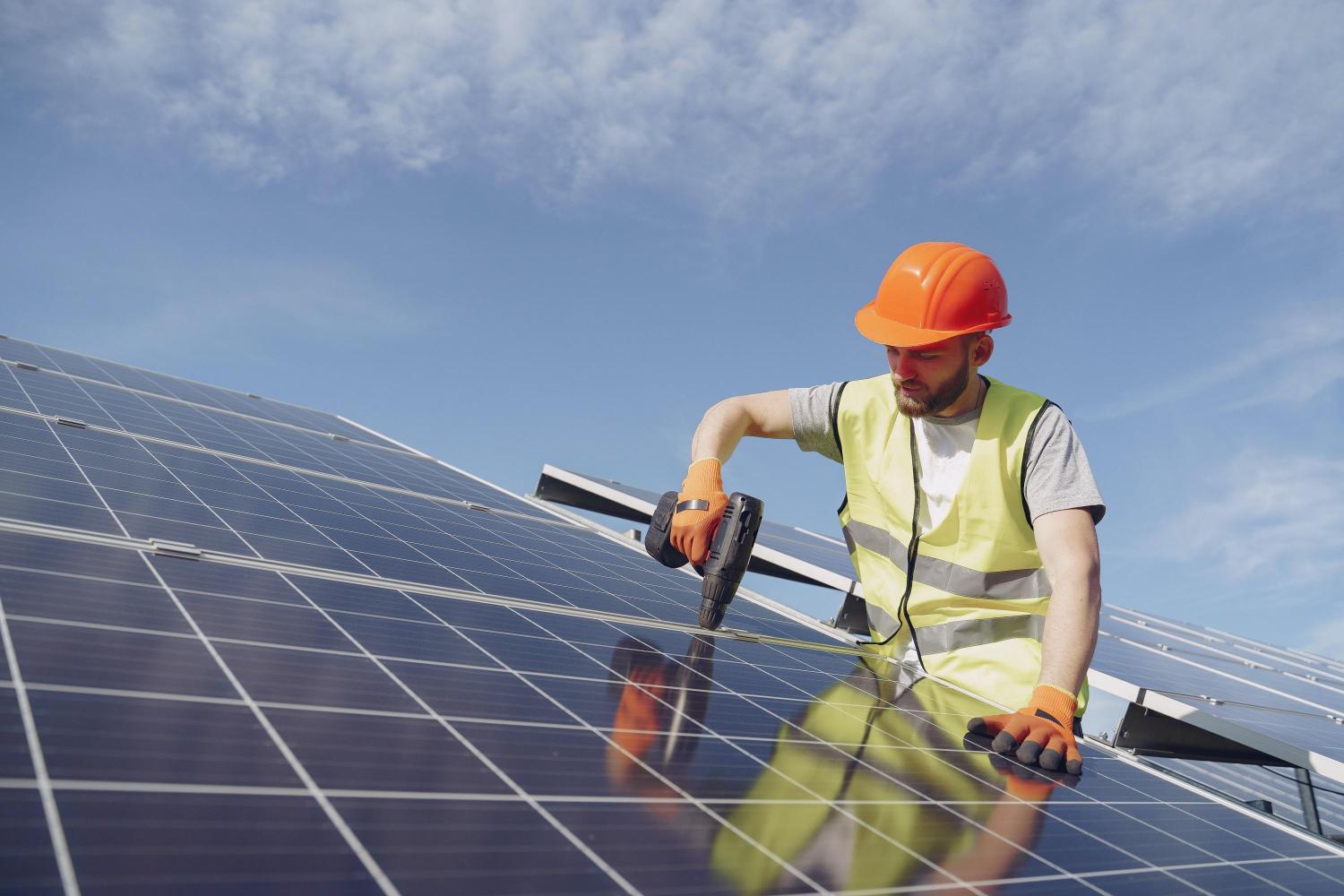
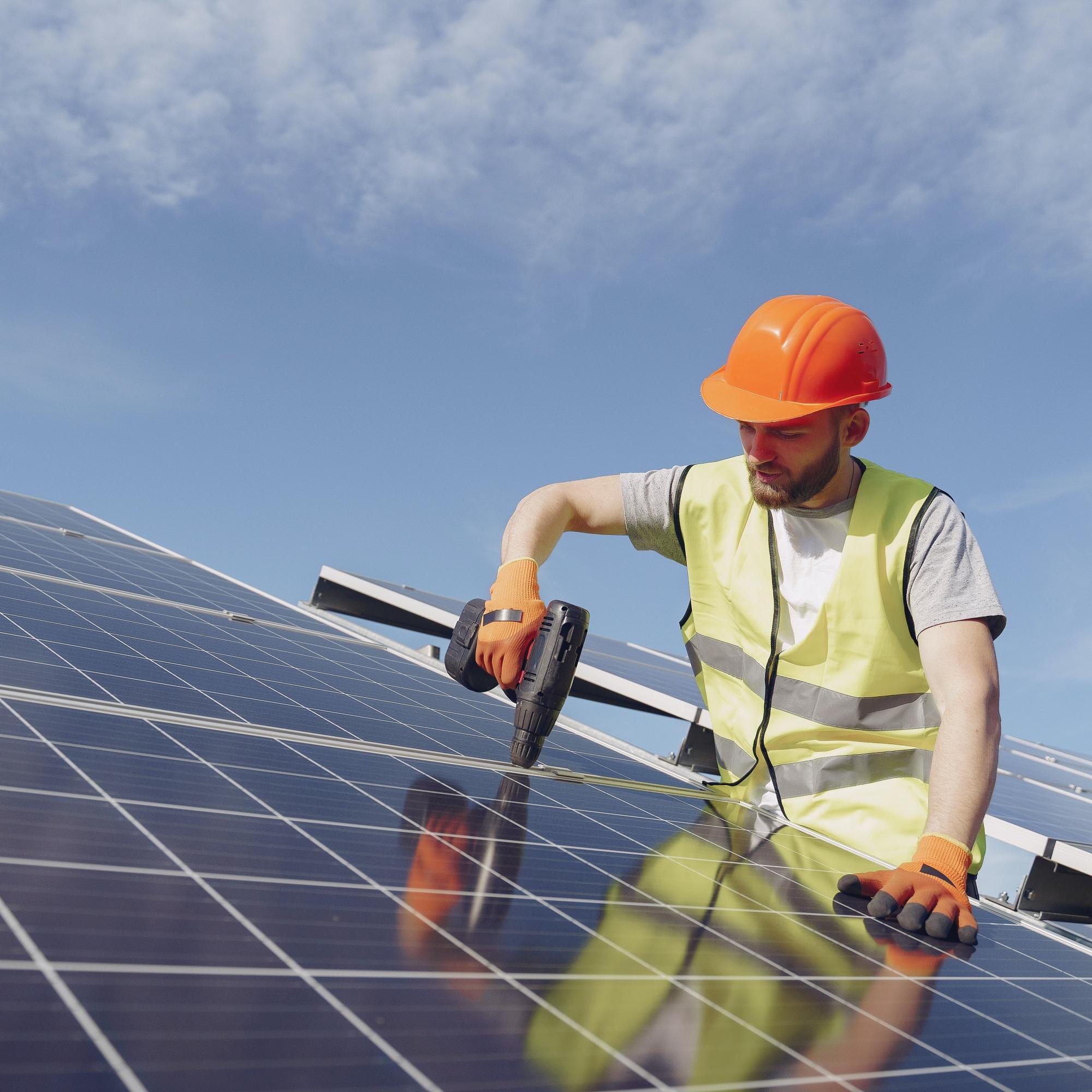
Earlier this week, Democratic Senator Joe Manchin announced that he would not support the climate provisions in the latest version of President Biden’s “Build Back Better” bill. That seemed to kill any chance of strong federal action on decarbonization, at least for the time being. Nevertheless, companies that have lobbied in support of Build Back Better still have an opportunity to make their voices heard.
What Is Build Back Better?
Build Back Better is an all-encompassing job creation, health care reform, tax reform and social progress bill. Among its provisions are several programs that leverage climate action as a platform for equitable economic growth. The bill is moving through Congress as part of the budget reconciliation process, so it only needs a simple majority vote to pass the Senate. Otherwise, it would require a filibuster-proof majority of 60 senators in favor.
The bill narrowly passed the House of Representatives last fall by a majority vote consisting of only Democrats in favor. The measure could also pass the Senate without any support from Republicans. However, that would require all 50 Democratic senators to vote in favor. With Joe Manchin (D-West Virginia) flexing his power to hold up the bill, they are short one vote.
As of last week, Manchin announced that he was willing to support the bill only if the climate provisions were stripped out.
Lots of talk, little action on federal climate policy
For all the corporate talk about sustainability, decarbonization and net zero goals, few leading companies have been willing to lobby persistently and publicly in support of the climate provisions within Build Back Better.
The organization InfluenceMap, for example, has analyzed lobbying activity around Build Back Better by more than 400 companies and 175 industry associations. As described in its analysis, currently only 75 companies have demonstrated engagement on the climate provisions of Build Back Better, whether positive, mixed or negative.
In fact, of the 75 companies that have engaged with Build Back Better, only 38 have consistently supported the climate provisions. Another group of 13 companies supported some provisions but not others, or expressed conditional support.
A third group of 17 companies showed “negative engagement,” with 13 related to objections over tax reforms. Also, in the “negative engagement” category were four other companies. Three were utilities and the fourth was Tesla, which has earned a set-aside partly due to the social media activities of CEO Elon Musk.
InfluenceMap points out that the small measure of corporate support for the climate provisions in Build Back Better is a sharp contrast to the amount of anti-climate lobbying conducted by industry associations.
“U.S. industry associations, including major cross-sector trade associations like the U.S. Chamber of Commerce, were highly actively opposed to the Build Back Better Act,” InfluenceMap notes.
According to InfluenceMap’s analysis, only 14 companies in the S&P 100 have consistently lobbied in support of the climate provisions in Build Back Better: Apple, Amazon, Salesforce, Exelon, Alphabet, Intel, Meta, Microsoft, Netflix, PepsiCo, Walmart, NextEra, General Motors and Ford Motor Company.
Using a different lens, the organization C2ES (Center for Climate and Energy Solutions) solicited 27 companies for a public letter to Congress in support of the climate provisions. The C2ES cohort focused mainly on top legacy manufacturing and energy firms that have pivoted into decarbonization: ABB, ArcelorMittal, bp America, CMS Energy, Constellation, Cummins Inc, Daikin U.S. Corporation, DSM, DTE Energy, Duke Energy, Edison International, Entergy Corporation, General Electric, HP Inc., Intel Corporation, LafargeHolcim, National Grid, PG&E Corporation, PSEG, Schneider Electric, Shell, Southern Company and Trane Technologies. The list also included startups LanzaTech and Proterra, as well as Ford and Salesforce.
The picture looks much brighter through a wider lens that accommodates smaller companies. Last September, before Build Back Better was trimmed down, the American Sustainable Business Network organized more than 300 companies to sign its own letter to Congress supporting the climate provisions. Ceres engaged almost 400 companies in similar letter last December, and the organization American Clean Power solicited more than 260 clean energy employers for another letter on January 24 this year.
Raising the corporate voice on climate action
Considering the depth of the partisan divide over energy policy, it’s no surprise that none of this activity persuaded Republicans in the House or Senate to vote in favor of Build Back Better. Senator Manchin is also unlikely to change his mind, considering his various ties to the fossil energy industry.
Still, as of this writing there are opportunities to act. As is his habit, Manchin left the door open for further discussion. In addition, new legislation could be forthcoming next year, if the Democrats hold their majority in Congress after the midterm elections.
The corporate voice is needed more now than ever. On top of GOP-led opposition to federal climate policy, a new obstacle arose last month when the Republican-appointed majority on the U.S. Supreme Court voted to strip down the authority of the Environmental Protection Agency to regulate power plant emissions.
InfluenceMap advises that climate advocates can leverage corporate statements on sustainability to build a new groundswell of support for federal climate legislation.
“All major U.S. companies should be asked to clarify their positions on the Build Back Better Act in relation to their own climate commitments and the current political and regulatory context in the U.S.,” InfluencMap advises. In particular, it recommends calling out companies that have expressed decarbonization and sustainability goals but oppose Build Back Better.
InfluenceMap also suggests that companies with a track record of support for Build Back Better can take it to the next level. To start, they can dedicate their public relations resources to reaffirming their support. These companies can also enlist the power of senior management and CEO messaging in the effort.
Advocates can also target companies that mainly object to the tax provisions in Build Back Better, or that have expressed mixed support. Such companies can be asked to step up and clarify their position specifically on the climate provisions, especially if they have established their own corporate sustainability goals.
Senator Manchin and his allies in the fossil energy industry holds an outsized influence on federal energy policy. Corporations that are truly serious about stepping up the pace of climate action need to stop touting their own achievements, and start rallying more support for federal legislation.
Image credit: Gustavo Fring via Pexels
What It Takes to Build Workplaces That Are More Inclusive for LGBTQ People
How can people be at their best in their careers if they work in an environment in which they don’t feel safe fully revealing who they are?
That is a question faced by millions of LGBTQ workers and their employers every day. According to a recent survey by the Human Rights Campaign Foundation, 46 percent of LGBTQ workers say they are closeted, 53 percent are hearing jokes about LGBTQ people at work, and 31 percent are unhappy at their workplace because they don’t feel safe or well represented.
Rebecca Snow, global vice president for people and organization at Mars, understands those feelings based upon her own life’s journey as someone who identifies as lesbian.
“Through my personal experience, I have learned how much productivity and happiness is eroded when people cannot be themselves — both in their personal life and at work,” Snow told TriplePundit. “I have a deep belief that businesses will be more successful — and employees will be more creative and engaged — when people can authentically be themselves.”
That starts with creating psychological safety and building teams on trust as a foundational principle, Snow continued. Leaders set the tone by being open about their personal strengths, weaknesses, successes and mistakes; asking for help when they need it; getting to know their employees as human beings, both personally and professionally; and recognizing they are “not always the smartest person in the room,” she said.
While Mars recognizes the climate can be tense for brands taking a stand on public issues, it has remained steadfast in its shows of support for the LGBTQ community and associates who identify as LGBTQ.
The building blocks of a diverse and inclusive workplace
Creating an inclusive workplace starts with a diverse workforce that represents society and represents the consumers or the clients being served, Snow said.
“I think that workforce, ideally, is represented by its leadership so that people can see themselves in the people that lead the organization,” she told us. “Then you also need to have the right support mechanisms in place.”
Those support mechanisms include people knowing that they have someone to go to for help, such as a line manager or human resources staff, and establishing the infrastructure, policies and processes that support people in their workplace as they wrestle “with all of the various challenges that people have these days,” Snow said.
Above all, she insists it’s important to have a solid foundation. For more than a decade, Mars says it has proudly built and enhanced that foundation, both internally and externally, so LGBTQ associates can be themselves at work. Internally, this has included establishing an internal community called PRIDE, which works with the company’s internal LGBTQ community and allies. It also has an “Inclusive Leadership” program that educates managers on workplace issues involving inclusivity for all forms of diversity.
Mars also ensures full parity across its entire suite of benefits, offering the same benefits to domestic partners and spouses, including benefits related to adoption. The company offers health plans to all employees that cover services for transgender people, including gender transition-related treatments. Additionally, it created a transgender toolkit for managers and associates to use when going through a gender confirmation in the workplace.
Mars also hosts 12 global LGBTQ associate resource groups across its confectionary, food and pet care businesses. The resource groups empower thousands of Mars associates to work together to advocate on behalf of the LGBTQ community and to support the Mars business and each other with resources and education.
“With these programs in place, for the second year in a row, we were proudly recognized in the Human Rights Campaign Foundation’s 2022 Corporate Equality Index, receiving the highest possible score of 100 percent in the benchmark survey reporting corporate policies and practices related to the LGBTQ workplace equality,” Snow said.
Fostering a culture of inclusion
From a cultural perspective, Mars has been building an inclusive workplace through the I Can Be Me campaign, which started in 2018 in the United Arab Emirates and is now reflected in Mars offices across the globe. “It was started initially because of the diversity challenges in [the UAE] region,” Snow said. “We wanted firstly to celebrate the diverse nationalities of our workforce in that region, but we also wanted to focus specifically on getting more women into the workforce, particularly into some of our factories, for example.”
I Can Be Me was sponsored by Mars leadership in the UAE and centers on leaders bringing their whole selves into the workplace and encouraging other people to talk about their own identities and be curious about others’. “Very rapidly the program grew into a much broader inclusion platform” that went far beyond the gender opportunity in the Middle East, “and we then rolled it out around the world,” Snow said. “It has become a consistent platform which starts with the individual, but can also be channeled to the particular challenges a local market might face in their diversity, equity and inclusion agenda and what might be some of the things that they go after.”
For example, when Mars’ team in the United Kingdom started their I Can Be Me program, they asked local associates about the biggest issues they wanted to address. Five working groups were established, including groups on LGBTQ, flexible working, mental health, disabilities in the workplace and age diversity.
In addition to the appropriate programs and policies, Snow said it is important for leaders to raise awareness of unconscious bias.
“To achieve this, we arm and support our leaders and managers on the front line to build skills and provide toolkits to help foster a more inclusive dialogue with their teams,” she explained. “The company also acts externally around LGBTQ related issues with the intent of ensuring that it can continue to provide a safe, welcoming and inclusive workplace for its employees.”
Mars has openly opposed discriminatory legislation that has threatened the rights of its associates and was among the 300 companies to file an amicus brief to the U.S. Supreme Court urging an overturn of the Defense of Marriage Act (DOMA) in 2013.
Recently, Mars joined more than 200 companies signing the Human Rights Council’s Freedom for All Americans’ Business Statement Opposing Anti-LGBTQ State Legislation and stating clear opposition to harmful legislation aimed at restricting the access of LGBTQ people in society.
The bottom line: Inclusion is key to better business
All of these efforts are reflective of Mars’ Five Principles — quality, responsibility, mutuality, efficiency and freedom — which aim to be the building blocks for how all Mars associates and businesses conduct themselves, Snow said. The company says it is committed to ensuring that each of its associates can be themselves at work, and associates have been open to the company’s efforts to promote business and each other with resources and education.
“Our overarching purpose is the world we want tomorrow starts with how we do business today, and one of our expressions of the world we want tomorrow is one where society is inclusive,” Snow concluded. “That's what we strive to live out as an employer. So, when you join our company, that’s effectively what you sign up for — you sign up to progressing that purpose. Our part of the bargain, if you like, is to make sure you are aware and up-skilled to be able to help progress that agenda.” Learn more about inclusion and diversity at Mars here.
This article series is sponsored by Mars and produced by the TriplePundit editorial team.
Image courtesy of Mars
Climate Change Affects Largest Greenhouse Gas Producers the Least: Is Legal Action the Solution?
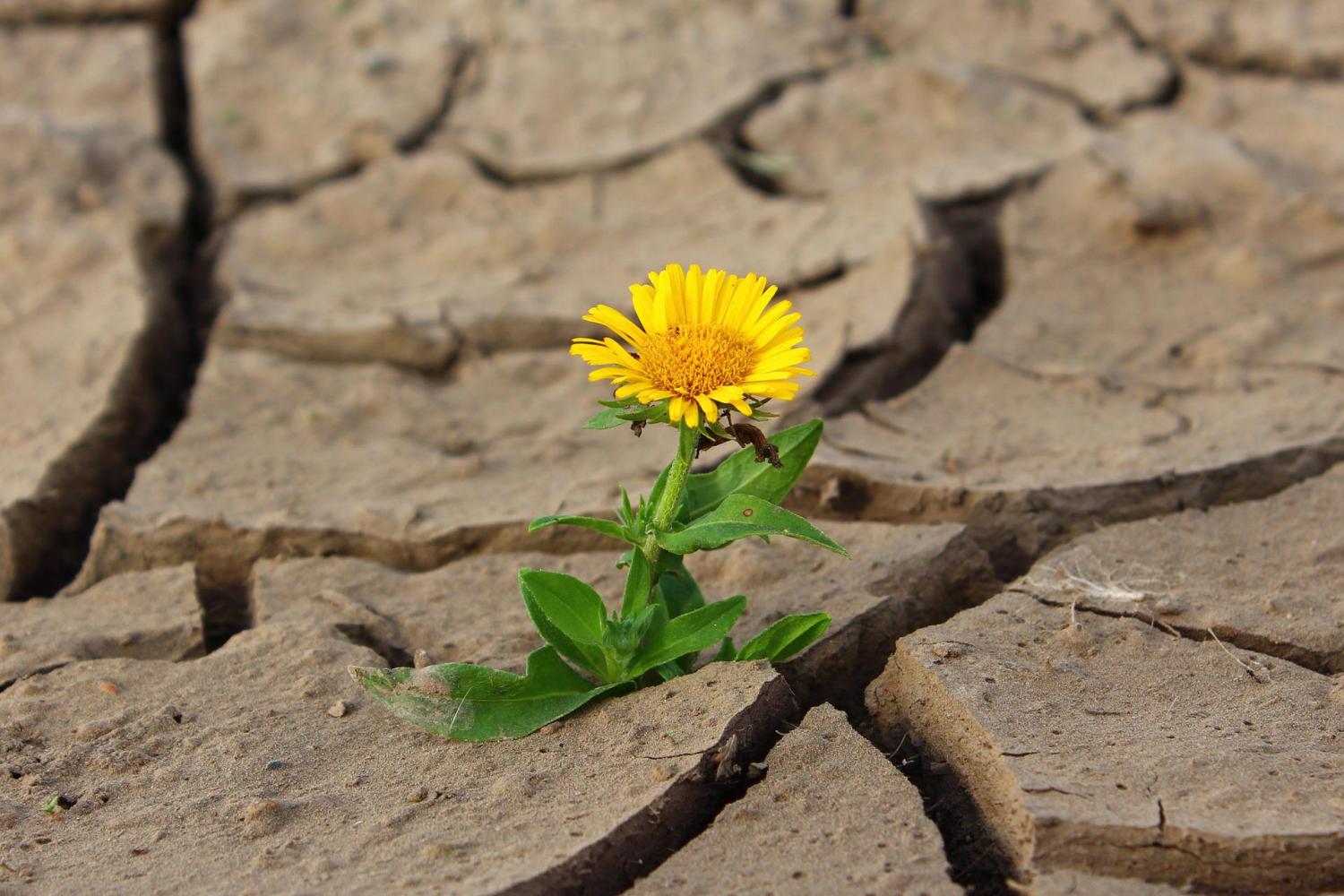
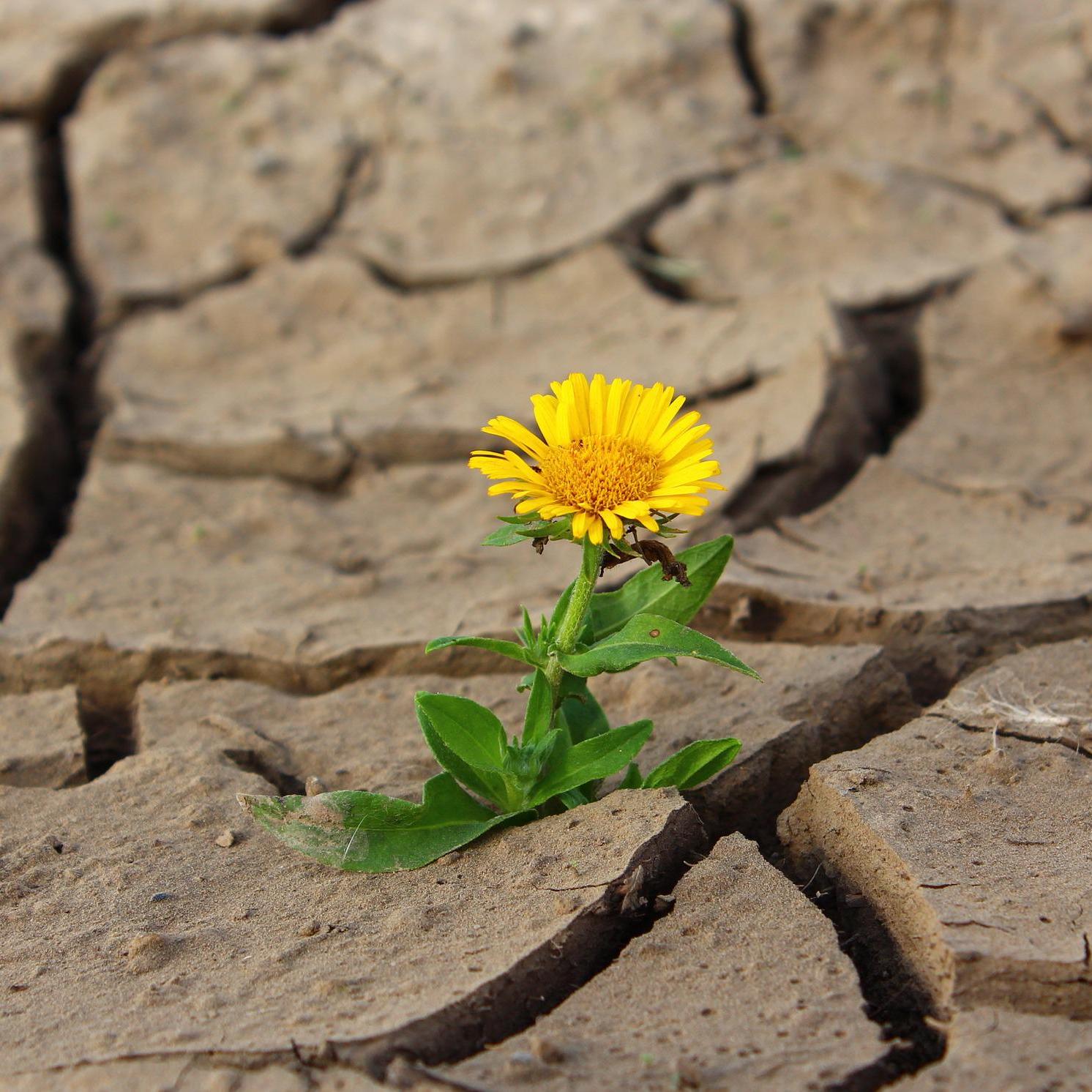
Researchers from Dartmouth College recently released a new study in which they’ve tallied up the costs of climate change along with the economic benefits of such activities. The study’s authors sought to determine just how much economic damage that the Global North has done to the Global South with the former’s reckless release of greenhouse gases. In demonstrating that the world’s advanced economies have shifted the consequences of their growth to the southern hemisphere, the report opens the door for restitution. However, financial compensation is not enough to restore climate equity. While top emitters must be held accountable for the total cost of doing business, they cannot be allowed to continue such business as usual.
Only 10 countries are behind 67 percent of worldwide economic losses due to climate change. Yet, those same countries reap 70 percent of the economic rewards from emissions-causing activity. Of the 10 largest emitters, the U.S. leads the pack in causing 16.5 percent of worldwide economic losses, with China not far behind at 15.8 percent. Meanwhile, instead of suffering their own losses, the two countries came out on top in economic rewards at 18 and 16.8 percent, respectively. Additionally, the five biggest greenhouse gas emitters (U.S., China, Russia, Brazil and India) were responsible for $6 trillion dollars in global losses from 1990 to 2014.
The report, aptly titled National Attribution of Historical Climate Damages, dispels the myth that climate change is a “collective action problem” and points instead to the way activities by certain individual countries are having a disproportionate impact on the rest of the world. Christopher W. Callahan, one of the researchers on the study, is quoted by Dartmouth as saying, “Nations need to work together to stop warming, but that doesn’t mean that individual countries can’t take actions that drive change. This research upends the notion that the causes and impacts of warming only occur at the global level.” But will this end the inevitable standoffs between top greenhouse emitters who refuse to do enough unless others agree to a certain standard as well, or will it make it worse?
Senior researcher Justin Mankin, also quoted by Dartmouth about the study’s outcome, said, “Greenhouse gases emitted in one country cause warming in another, and that warming can depress economic growth. This research provides legally valuable estimates of the financial damages individual nations have suffered due to other countries’ climate-changing activities.”
According to the study, while countries with colder baseline temperatures tend to release the most greenhouse gases, warming temperatures have not had overall negative economic effects quite yet. Rather, these countries’ GDPs have increased. Warm countries, on the other hand, have suffered much greater losses due to the effects of climate change on crop yields and labor, with an average GDP loss of one to two percent. Of course, as “warm” countries that are also releasing more than their share of greenhouse gasses, Brazil and India are exceptions. This begs the question: How much of their own economic growth are these two countries stunting by not better controlling their emissions?
The economic effects of climate change aren’t expected to slow down anytime soon. In fact, a worldwide economic downturn of 11 to 14 percent is predicted for the middle of the century. While the big emitters like the U.S. won’t be immune to these effects, it is no longer up for debate that the Global South will suffer the brunt of the disaster. The Global North, therefore, has a moral imperative not only to compensate those who have suffered from its growth, but to immediately and drastically change the way that business is done so that all costs are paid by those who benefit. Legal action may very well be the only recourse — not only through lawsuits to restore the costs that have been wrongfully suffered by the Global South, but also in the form of injunctions to stop the continued flood of emissions.
Image credit: klimkin via Pixabay
Amidst Criticism, ESG Reporting Should Be Reformed, Not Abandoned

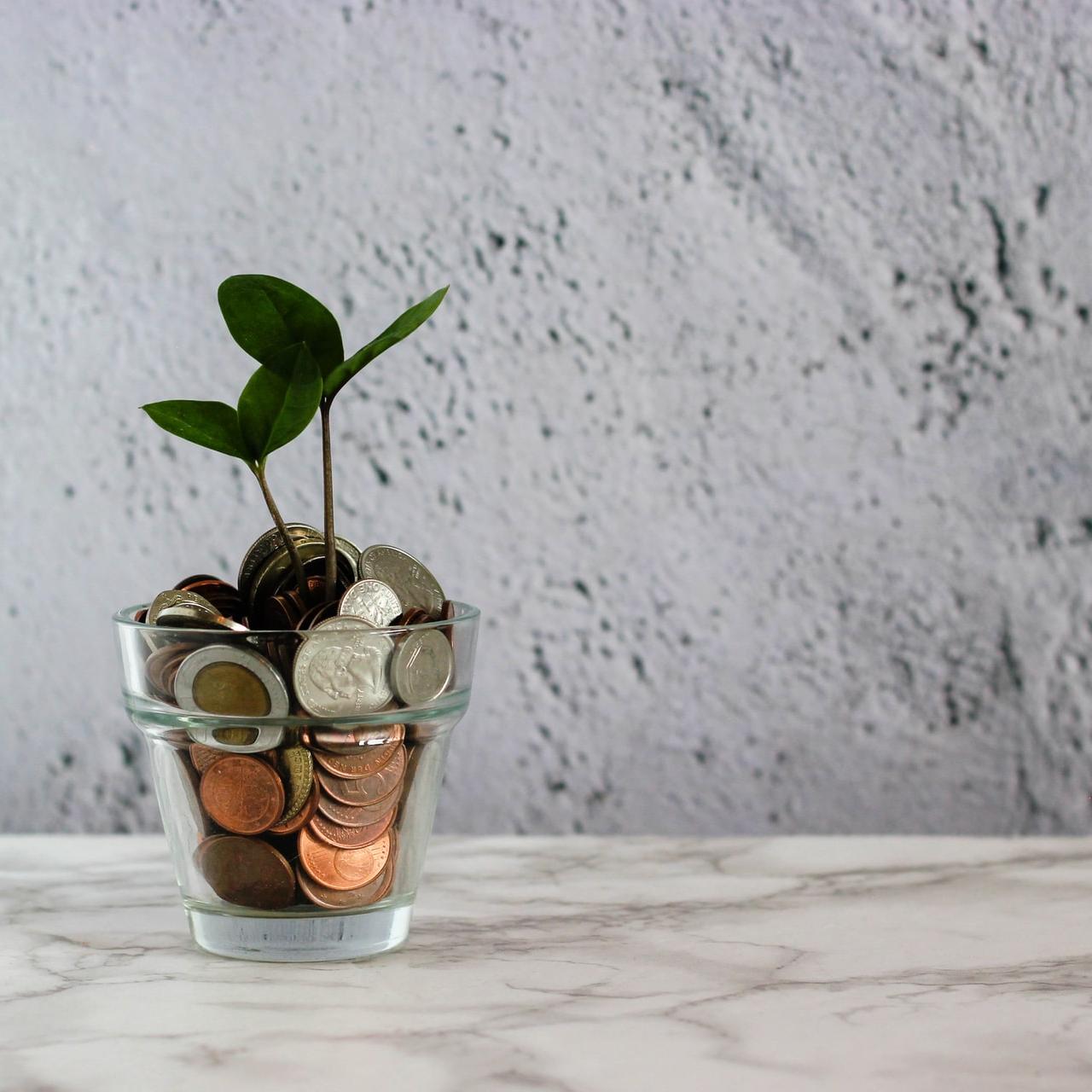
ESG reporting is the new arm of corporate social responsibility (CSR), and in an attempt to crack the S&P 500 ESG, some companies are catching the ire of the U.S. SEC (Securities and Exchange Commission).
Is that confusing? That’s one of the problems with environmental, social, and governance (ESG) reporting. Ambiguous language, confusing acronyms and unclear definitions detract from the insight that the metric is meant to provide.
Academics and business executives question the effectiveness and morality of ESG reporting, often by citing its lack of consistency. Perhaps most notable among them was Elon Musk when he tweeted, “ESG is a scam.” Musk made the claim after his electric vehicle company Tesla was pulled from the S&P 500 ESG Index.
EY’s global vice chair of sustainability, Steve Varley, is a proponent of ESG reporting and investing, but he admits that “more work must be done to encourage open collaboration and trust-building among those who shape the industry.”
In order to maintain the progress made in sustainability reporting, EY (long known as Ernst & Young) has commissioned a new report on how to strengthen ESG ratings.
What’s wrong with current ESG reporting?
To appeal to consumers and investors, companies want to share publicly that they are responsible corporate citizens who care for the environment and important social causes. Without a regulated standard for ESG reporting, however, companies are essentially free to claim what they want. What counts as “green initiatives” or “social progress” is up to the company.
Consumers and investors want to support sustainable brands, but this creates an incentive for companies to greenwash and undermines the value of ESG reporting.
In response, the SEC created a Climate and ESG Task Force in March 2021 to investigate companies’ ESG claims. In May 2022, it issued its first enforcement action against the NYSE-listed Brazilian mining company, Vale S.A. The task force found that Vale made false claims and misled stakeholders about the safety of its dams, one of which collapsed and killed at least 259 people.
The SEC task force is a step in the right direction, but the commission’s jurisdiction is limited to publicly traded companies in the United States. ESG is a global concern, and better independent oversight, or assurance, is needed.
“About half of the world’s largest companies have assurance over their sustainability disclosures, though the significant majority are obtaining “limited” rather than “reasonable” assurance on a par with what is provided over financial reporting,” says Marie-Laure Delaure, who leads EY’s assurance practice.
How to improve ESG reporting
In response to the growing criticism of the rating system, EY released a new report on the state of ESG and recommended five actions to strengthen the credibility of the metric.
The report recommends more transparency over ESG ratings, increasing understanding of the varying uses of sustainability information, putting in place conditions that enable assurance, developing comparable and interoperable taxonomies, and addressing the barriers faced by market participants in emerging countries.
According to Varley, “ESG is facing a make-or-break moment and requires a whole system approach to addressing these issues.”
Acting on these recommendations would remove a lot of the grey area in ESG reporting and make it easier for investors and consumers to support truly sustainable businesses.
Why is ESG important?
Financial growth is vital to maintaining a strong economy, but positive economic performance should not come at the cost of a deteriorating environment or violating human rights.
We want to know that companies are acting in good faith.
“According to the most recent EY Global Institutional Investor Survey, 89 percent of investors surveyed said they would like the reporting of ESG performance, measured against a set of globally consistent standards, to become a mandatory requirement,” says Varley.
Before it can become mandatory, however, the ESG rating system requires vast improvements, global cooperation and regulatory oversight.
Image credit: micheile dot com via Unsplash
The Global Meat and Dairy Industries Are at an Inflection Point
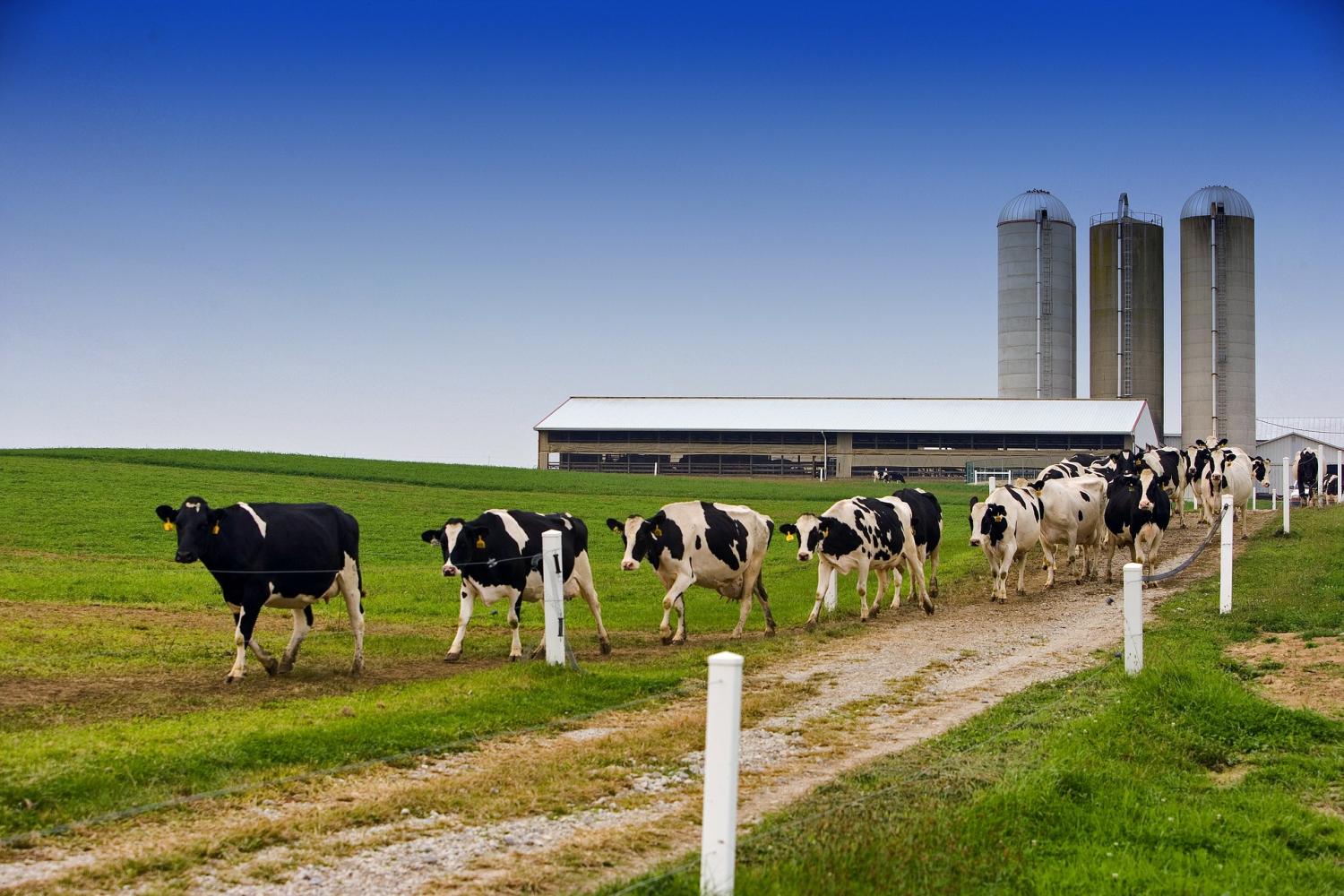

With the global meat industry’s profits increasing during the pandemic and the dairy industry sticking to its marketing playbook, there seems to be little incentive to shake up these sectors.
However, the meat and dairy industries are more vulnerable than they appear. A new report shows that investors are aware of sustainability issues within those sectors’ value chains, and climate change may force the hands of corporations in this space, regardless of their products’ popularity.
Meat and dairy: stranded in a vicious cycle?
The Changing Markets Foundation recently released a report urging investors to step up and take action to address the meat and dairy industries’ contributions to climate change.
Researchers from the Changing Markets Foundation surveyed more than 200 investors. The organization’s goal was to see how the financial sector views the meat and dairy sector’s viability at a time when climate change is now become more of a concern.
More than 80 percent of investors surveyed stated that inaction on climate change could lead to stranded assets and other material risks to investments in the industry. Nearly three-quarters of those surveyed think companies should report their methane emissions alongside other greenhouse gas (GHG) data.
Yet, 55 percent of respondents believe investors are not adequately addressing the risks associated with climate change.
The campaigns director at Changing Markets, Nusa Urbanic, said, "We are currently at a crucial crossroads that will determine the future of food production for decades to come. Despite the majority of investors believing that climate change presents a material risk to meat and dairy industry-related investment, it is concerning that more than half also said that investors are not sufficiently addressing those risks."
Added Urbanic, "The alarming effects on the sector multiply the hotter the planet gets. Farmers across the globe are already feeling the pain and we need rapid action to break this vicious cycle."
Livestock and its future in the climate crisis
According to the Changing Markets report, food production accounts for more than one-third of GHG emissions. A substantial portion of those emissions come from meat and dairy production.
For example: if meat and dairy were replaced with a vegan diet, the data suggest that emissions could drop by as much as 70 percent. That is nearly impossible, however, and to hit goals established by the Intergovernmental Panel on Climate Change (IPCC), all sectors need to reduce their emissions.
But companies that rely on livestock still face huge financial risks. If the world warms by 2 degrees Celsius or more, livestock could experience losses that could total more than $12 billion. Approximately 7 to 10 percent of all livestock would be lost at a global average temperature increase of 2 degrees; but even more worrisome, according to the report’s authors, the world is on track for 3 degree increase in global temperatures by mid-century.
So even if businesses vested in the meat and dairy industry refuse to make any changes, rising temperatures worldwide will eventually make such decisions for them.
Methane reductions are vital
The investors that the investors report’s authors surveyed said they seek methane disclosures from companies in the dairy and meat sectors, and livestock (primarily cows) generate about one-third of such emissions. A focus on methane, concludes the report, can help repair the world’s climate much quicker than other GHG emissions as methane is a much more potent greenhouse gas than others such as carbon. To that end, companies can take actionable steps in order to reduce their methane emissions.
Changing Markets’ survey listed four recommendations for investors: report their science-based climate and methane policies; ensure investees have climate action plans with a focus on methane; ask food companies to disclose their investments in meat and dairy alternatives; and support the growth of regenerative farming practices.
While the report focuses on how the investors can turn their beliefs into action, some companies have already begun to lead the way.
One such company is Upfield, which makes a wide range of plant-based food and spreads. The company’s reporting shows that methane alone accounts for 7.5 percent of its GHG inventory. Upfield, with a portfolio that includes brands like Violife, Flora, Country Crock and Bertolli, has acknowledged that dairy products comprise only 1 percent of its ingredients — but that amount accounts for 7 percent of its carbon footprint and 51 percent of its methane emissions.
Ben and Jerry's Project Mootopia, which reduces and reuses methane from cows, is adopting new technologies to follow through on its climate action plan. Among the brand’s goals are to reduce emissions on 15 of its dairy farms to half the industry average by 2024 as well as plans to scale up regenerative agriculture across its supply chain.
In the meat industry, Applegate is adopting regenerative agriculture practices. Within the dairy sector, the same can be said of Danone, which sells a wide range of dairy products. Regenerative farming and other sustainable agricultural practices allow for the restoration of biodiversity — and even offer farmers opportunities to develop new income streams.
While these examples show potential for change within the meat and dairy sectors, many companies in this space still face a long road ahead. As the IPCC has repeatedly stated, GHG reductions are needed in all sectors to hit global climate action goals; and specifically for the meat and dairy industries, methane reductions will require bold action from both investors and businesses.
Image credit: David Mark via Pixabay
After Dobbs, Pregnant People Suffer While Corporate America Parties On
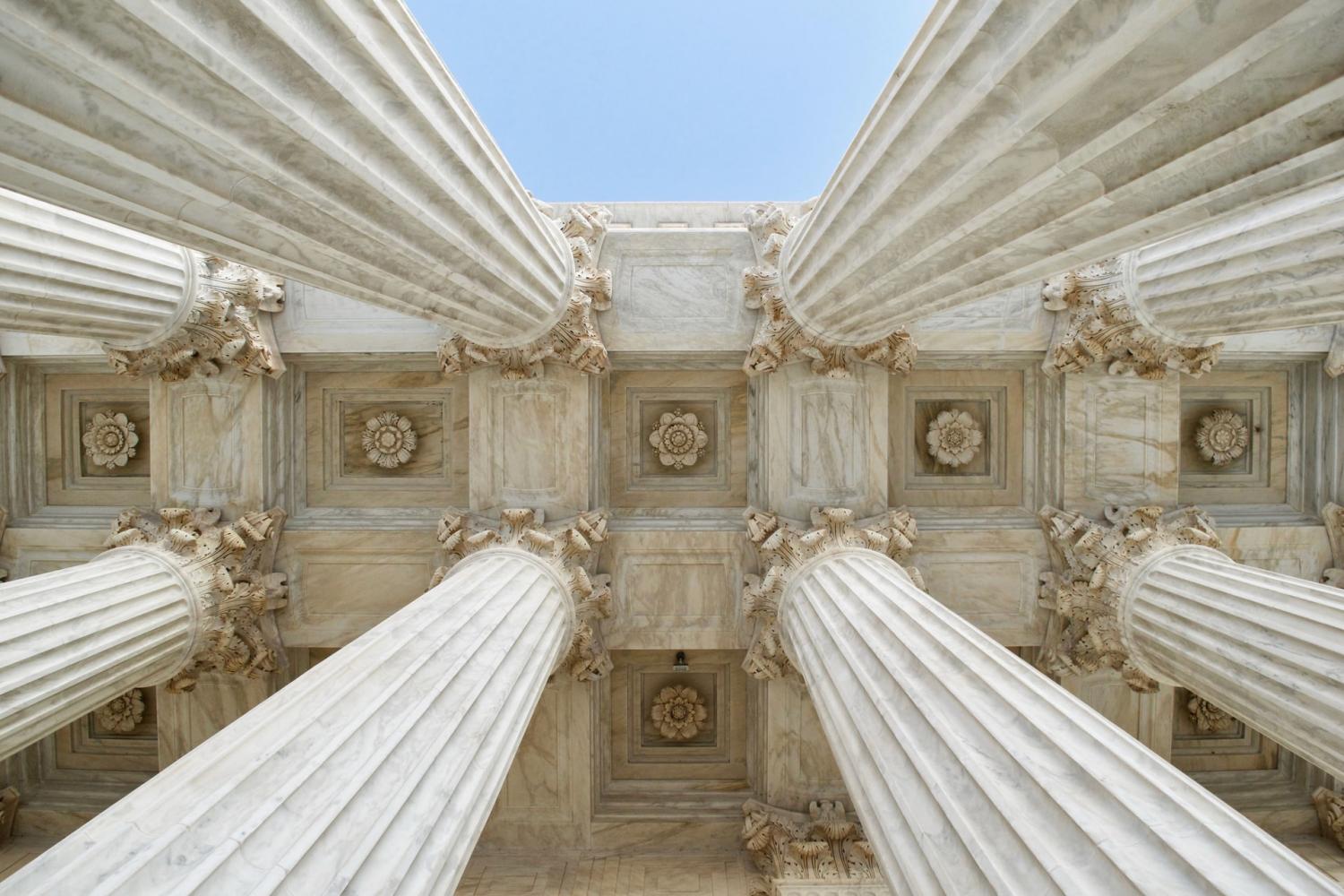

The pillars of the Supreme Court of the United States
The self-professed “pro-life” movement in the U.S. has always been a sham, but the charade continued for decades until last month. The recent U.S. Supreme Court decision in the Dobbs v. Jackson Women’s Health Organization case has now empowered states to impose new restrictions on abortion, with predictable results. Popular media has already latched on to a growing list of horror stories as abortion care is denied or delayed. It is only a matter of time before corporations begin to feel the heat, especially when their own employees suffer.
Republican attorneys general in the spotlight over abortion
A fair amount of media activity has focused on corporate support for anti-abortion Republican legislators and state governors. Court observers have also pointed out that all six of the Supreme Court justices who rendered the majority decision in Dobbs were appointed by Republican presidents. Except for a few outliers, the partisan political lines over abortion have been clearly drawn.
Republican state attorneys general have not come up for similar scrutiny, but they have also played a pivotal role in recent years.
For example, Mississippi Attorney General Lynn Fitch is not exactly a household name. However, as a member of the Republican Attorneys General Association (RAGA), she was instrumental in building the legal strategy that convinced all six Republican-appointed Supreme Court justices to nullify 50 years’ worth of abortion protections.
RAGA is beginning to get more attention from the media, though. On July 24, the publication American Prospect took note of the RAGA's role in raising funds to support anti-abortion candidates, with money flowing from corporations as well as individuals and “dark money” groups.
American Prospect does not reach a particularly wide audience, but CNBC does. The multi-platform news organization claims an audience of more than 355 million people per month across the entire organization. On July 14, CNBC published an article about RAGA under the headline, “Republican attorneys general to host private retreat for corporate donors at swanky Palm Beach resort.” Almost 20 corporate and trade groups reportedly intended to participate in the event, held last weekend at The Breakers in Palm Beach, Florida.
Editor's note: Be sure to subscribe to our Brands Taking Stands newsletter, which comes out every Wednesday.
As described by CNBC, those planning to attend included lobbyists and executives from CNBC’s own corporate parent, Comcast, along with Match Group, General Motors, Johnson & Johnson, Anheuser-Busch, Juul Labs, Koch Industries, Lowe’s and Walmart.
“Lobbying giant Pharmaceutical Research and Manufacturers of America, or PhRMA, and the U.S. Chamber Institute for Legal Reform, a business legal advocacy group, are also listed as set to attend the upcoming retreat,” observed CNBC reporter Brian Schwartz.
“Records show that, since the 2020 election cycle, almost all the corporations and trade groups listed to attend the retreat have, combined, contributed over $4 million to the Republican attorneys general group. RAGA has raised over $4 million from all donors in the first quarter of 2022 alone,” Schwartz elaborated.
“The retreat is to take place as the group seeks more donations to fend off legal attacks from Democrats seeking to protect abortion rights. A June 24 fundraising email said ‘every donation will help the Republican Attorneys General combat the Democrats’ pro-abortion agenda and stand tall for life,’” he added.
Calls by Schwartz to the invitees resulted in only seven responses on the record. Of those, only Pfizer confirmed that it was invited, but opted not to attend.
The horror stories are piling up
In contrast to the elite party atmosphere at the RAGA gathering, the media has been front-loaded all week long with stories about ordinary people — women, girls, and transgender or non-binary individuals — who are already suffering the consequences of the Dobbs ruling.
These stories have already become rich grist for the media mill, beginning with the 10-year-old girl in Ohio who was forced to travel out of state for abortion services. The case has helped raise public awareness about the frequency of pregnancy among pre-teen rape victims.
“…Ohio’s own abortion statistics and other reporting show that it’s disturbingly possible for a 10-year-old to become impregnated in the Buckeye State,” reported the Ohio Capital Journal on July 13.
Another media-attracting case surfaced on July 18. People Magazine was among the news organizations to amplify a CNN interview with Marlena Stell, a Texas businesswoman and popular YouTuber whose planned pregnancy ended when an ultrasound revealed the death of her fetus at approximately 9 weeks. Stell also shared the interview with her 79,000 Twitter followers.
Adding to Stell’s dismay at losing her pregnancy, her doctor refused to extract the fetus unless she submitted to a second invasive ultrasound. She spent two weeks carrying the dead fetus before another doctor finally consented to provide an abortion without forcing her to undergo the additional distressing and medically unnecessary procedure.
“I get so angry that I was treated this way because of laws that were passed by men who have never been pregnant and never will be," Stell said, as cited by People Magazine. "I'm frustrated, I'm angry and I feel like the women here deserve better than that.”
"It doesn't matter what side of the fence that you want to sit on, laws like this affect all women regardless of what situation you're in and it's not right," she emphasized.
The law of unintended consequences kicks in after Dobbs
Stell is far from alone as the effects of the Dobbs decision linger on. All pregnant people in her home state of Texas now face the risk of having appropriate medical care withheld, regardless of their desire to keep or terminate a pregnancy.
“In a post-Roe world, physicians in states where abortion has been banned have to weigh the legal implications of their actions, instead of making decisions based on what prevailing medical literature recommends,” the Texas Tribune reported on July 15. “In Texas, doctors can face six-figure fines and be put in jail for any disallowed abortions.”
The Tribune cited a letter sent from the Texas Medical Association to state medical officials, charging that “hospital administrators and their legal teams are stopping doctors from providing medically appropriate care to patients with some pregnancy complications.”
At one hospital, doctors were reportedly instructed to delay care for an ectopic pregnancy, even though serious risk to the patient could be avoided with prompt treatment. At two other hospitals, doctors were reportedly told to send pregnant patients home if their water broke too early in the pregnancy, rather than promptly removing a fetus that had no chance of survival. The policy would force them to wait at home for hours, days or longer, suffering and miserable while facing the risk of infection and other complications, until their own systems eject the fetus.
The new restrictions on abortion have also quickly rippled out to have an impact on other areas of healthcare. On July 16, for example, Associated Press reporter Lindsey Tanner added lupus patients to the list of those affected by the Dobbs decision.
“A sexual assault survivor chooses sterilization so that if she is ever attacked again, she won’t be forced to give birth to a rapist’s baby. An obstetrician delays inducing a miscarriage until a woman with severe pregnancy complications seems ‘sick enough.’ A lupus patient must stop taking medication that controls her illness because it can also cause miscarriages,” Tanner wrote.
When “both sides do it” is not enough of a response
The spectacle of representatives from top U.S. firms cavorting with anti-abortion state attorneys general and other allies will eventually come home to haunt corporate leaders, and the familiar “both sides” refrain will not help them in the wake of the Dobbs decision.
In his CNN article, Brian Schwartz cited General Motors spokesperson Jeanine Ginivan, who noted that the company also supports the Democratic Attorneys General Association.
“General Motors has been a longtime supporter of the Democratic Attorneys General Association and the Republican Attorneys General Association. GM believes that through continuous engagement with these organizations it has the best opportunity to build an understanding around issues important to GM and the auto industry,” Ginivan said, as cited by Schwartz.
That “both sides” attitude will be no comfort to thousands of GM employees in Ohio, Texas and other anti-abortion states, who find the door slammed shut when they seek medical care for an unwanted, unsafe or complicated pregnancy.
The fact is that only one side is responsible for the pain, suffering and government-sanctioned surveillance that already flow from the Dobbs ruling. U.S. business leaders need to stop sticking their heads in the sand, and start taking meaningful action to repair the damage.
Image credit: Jesse Collins via Unsplash
Your Company’s Missing DEI Strategy: Remote Work


As companies continue to say they will follow through on their diversity, equity and inclusion (DEI) pledges, the evidence suggests that many recent changes to hiring practices and workplace culture are not making much of a difference.
Black women are feeling stressed out in the office at very high levels. Being out at work is a distraction for many LGBTQ employees. And overall, women have reported feeling burned out at a higher rate than men, which shouldn’t be a surprise as female employees shoulder the burden of juggling family and office responsibilities more than their male colleagues.
If companies are truly committed to ensure that all employees are treated equally, there is one simple solution that could make everyone in the office feel valued — before asking employees of color to work for free to buoy your DEI programs or spending a lot of money on DEI consultants.
It’s clear that offering remote work as a benefit, with no strings attached, can help many employees heal and thrive as they feel both valued and productive.
Editor's note: Be sure to subscribe to our Brands Taking Stands newsletter, which comes out every Wednesday.
To start, there’s a racial divide in attitudes toward working remotely: A new study from Future Forum found that Black men and women prefer more flexibility in where they work (38 and 33 percent, respectively), while white men and women responded the same at a rate hovering around 25 percent.
As Leron Barton, an author, speaker and engineer by trade summed it up on Slate last week: “As a Black man, my mental health is a priority. I have to guard and protect myself from experiencing and witnessing racism every day. I am currently working remotely, and I can say for certain my mood and demeanor have improved. Not having to decide if I should address a racist comment or action as much has made my day easier.”
For LGBTQ employees, the office versus remote debate is a mixed bag. A LinkedIn survey from last month found that 40 percent of LGBTQ employees value the networking opportunities available with other LGBTQ professionals when they are in the office. Yet more than a third say that working from home reduces the stress that of feeling they have to constantly come out day after day in the workplace.
Then there’s the ongoing saga endured by Black women, who at a rate as high as 88 percent have indicated they feel burned out at work. Among the reasons: More than half of them told the consultancy Every Level Leadership that they feel as if they are the ones who are made to teach their colleagues about DEI. “Workplace DEI is a company issue, not yours,” Every Level’s CEO, Ericka Hines, said earlier this month on CNBC.
Your Black female employees shouldn’t be working as DEI consultants for free. If anything, they should have the choice to work from home, mind you, with a stipend to cover such costs.
As Eugene S. Robinson, a marketing executive, wrote for the Los Angeles Times: “The [remote work] experience revealed an unexpected and until now unvoiced joy: Working, free from daily office interactions, let the focus stay on work. Absent any other interpersonal weirdness.” In other words, remote work can avoid any awkwardness or hostility that a company’s DEI program has failed to address.
To be clear, the pandemic’s lingering effects continues to have a greater impact on women more than men. Women overall are feeling the stress of managing their families and office responsibilities more than men — nevertheless, one study from McKinsey concluded that companies offer their male employees the opportunity to work remotely at a rate 10 percent higher than their female colleagues. A work culture that sets up different rules for different people is going to end in failure, probably sooner rather than later.
To that end, giving employees the flexibility to decide where they prefer to work is one way in which companies can make all employees feel welcomed, included and treated equally. Is remote work a panacea or cure-all for a company’s DEI challenges? Of course not. Emails can still go unanswered, and snark can be said over Zoom. But given the choice of dealing with microaggressions at the office or over a screen, it’s clear that for many workers’ wellbeing and mental health, one’s space at home is a safe space. Still not convinced? Ask the folks at Meta how its remote work policy panned out for the company.
Image credit: Tima Miroshnichenko via Unsplash
This Supplier Engagement Program Promotes Pollinators and Biodiversity
The urgency of environmental challenges like climate change and biodiversity loss is mounting. Scientists are sounding the alarm of a sixth mass extinction, with 30 to 50 percent of all species on Earth expected to be lost by the middle of this century. And the Intergovernmental Panel on Climate Change (IPCC) has warned the goals of the Paris agreement are on “life support.”
With supply chains that stretch around the world, international companies are positioned to be at the forefront of tackling these challenges within their supply chains. Mondelēz International, which makes some of the most popular snack foods in the world, works to preserve biodiversity and promote climate-friendly practices with supplier farmers in Europe through its Harmony Wheat program — and other companies can learn a lot from its approach.
Mondelēz International’s Harmony Wheat program prioritizes biodiversity and collaboration
The Harmony Wheat program engages farmers to support the adoption of sustainable practices that aim at lowering the environmental impact of growing wheat, including protecting biodiversity and reducing carbon emissions. Mondelēz International developed the program in collaboration with NGOs, agronomists, and environmental specialists and enrolled more than 1,500 wheat farmers across Europe in 2021.
With biodiversity at the heart of the program, partner farmers are required to commit to at least one action from three options designed to strengthen biodiversity, with a specific focus on pollinators: They can plant or extend hedges that provide habitat for insect species; dedicate a minimum 3 percent of their fields to honey fallows made up of local plants rich in nectar and pollen; or plant these nectar-rich species as intercrops on at least 3 percent of their fields after the harvest season.
In 2021, the program has preserved and observed nearly 26 million bees and 32 species of butterflies in Harmony Wheat fields, according to Mondelēz International’s latest ESG report, Snacking Made Right.

Supporting the central stakeholders: Farmers and consumers
The Harmony Wheat program operates closely with its partner farmers, millers and cooperatives with "a very strong, co-creation mindset,” said Marie Ellul, bakery, well-being and sustainability senior manager for Mondelēz International in Europe. The company uses multiple metrics to track progress, share the results with partners, and rework its approach based on lessons learned.
Over the last 10 years the company has intensified its efforts to introduce and implement the program across Europe, Ellul said — and it’s seeing tremendous growth. In 2018, 60 percent of the wheat used across the company’s 30 European biscuits brands was grown by Harmony Wheat participating farmers. That figure rose to 91 percent by 2021, and Hungary became the seventh European country to host the program.
"The aim of the Harmony program is to support the farmers, and the wheat chain in general, in their agro-ecological transition,” Ellul told us. While all countries operate under a common credo for the Harmony program, each country has its own agricultural practices charter personalized on factors such as climate conditions and maturity of agricultural practices. The program pays farmers a premium for implementing their local charter’s guidance on sustainable practices that promote biodiversity and reduce carbon footprint. Mondelēz International’s biscuit production sites also source wheat from the Harmony farmers nearby nearest to them, further reducing climate impact.
For farmers like Emeric Duchesne, the program offers an opportunity to build on the sustainable practices they already use — and be compensated for them. “Being part of the Harmony Wheat sustainability program makes a lot of sense for a farm like ours,” said Duchesne, a French wheat farmer who has worked with the Harmony program since 2014. “Sustainable agricultural practices and environmentally-friendly behaviors have always been our main concerns, and we are proud to continue the ongoing work started by my father and grandfather.”
“Best practices such as planting hedges for biodiversity; reducing the chemicals used thanks to innovative technology, such as the use of GPS; and reducing our impact on the ecosystem we are part of make me proud of my work and more respectful of the wildlife such as bees,” added Duchesne, who coincidentally also keeps bees on his farm.
“It’s also very important for me to be part of the traceability chain provided by the Harmony Program,” he said. "I do produce high-quality wheat, and I want to make sure consumers get access to this high-quality and environmentally-friendly product as well, in the biscuits they eat.”
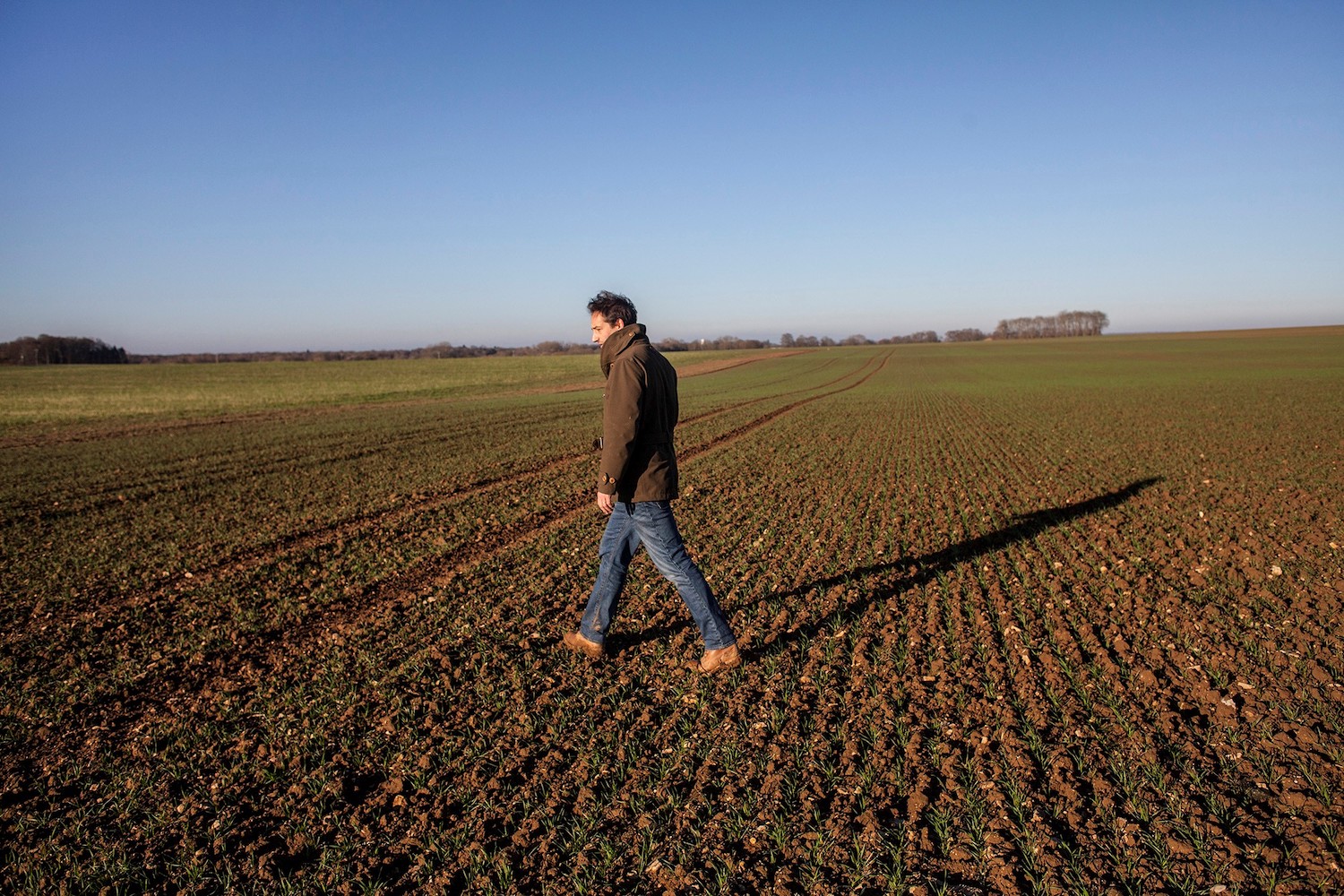
Sustainable sourcing can help companies meet shifting consumer needs
Along with generating more positive impact for both farmers and biodiversity, a sustainable sourcing program like Harmony Wheat can help companies like Mondelēz International connect and build trust with consumers whose preferences are steadily shifting toward more sustainable products. "Consumers are more and more aware of the environmental issues we are facing. They really expect their favorite brands to act more sustainably,” Ellul told us. "Our brands like LU, ORO or Fontaneda are beloved brands in Europe, and they use a large quantity of wheat, so it makes a lot of sense to push that program further for our consumers.”
For other companies looking to bolster their sustainable sourcing in response to consumer preferences, Ellul offers a few pieces of advice: Start small and test locally, co-construct the program with local stakeholders and, when it’s ready, look to integrate the program across your supply chain.
The approach worked well enough for Harmony Wheat, which began as a pilot program with one Mondelēz International brand and 68 farmers in France and steadily expanded based on lessons learned. The company says it is on track to source all of the wheat needed for its European biscuits production from Harmony-affiliated farms by the end of this year. For next steps, it’s focused on contributing to its international commitment to a net zero emissions target by 2050 while continuing its efforts to protect biodiversity in Europe.
This article series is sponsored by Mondelēz International and produced by the TriplePundit editorial team.
Images courtesy of Mondelēz International